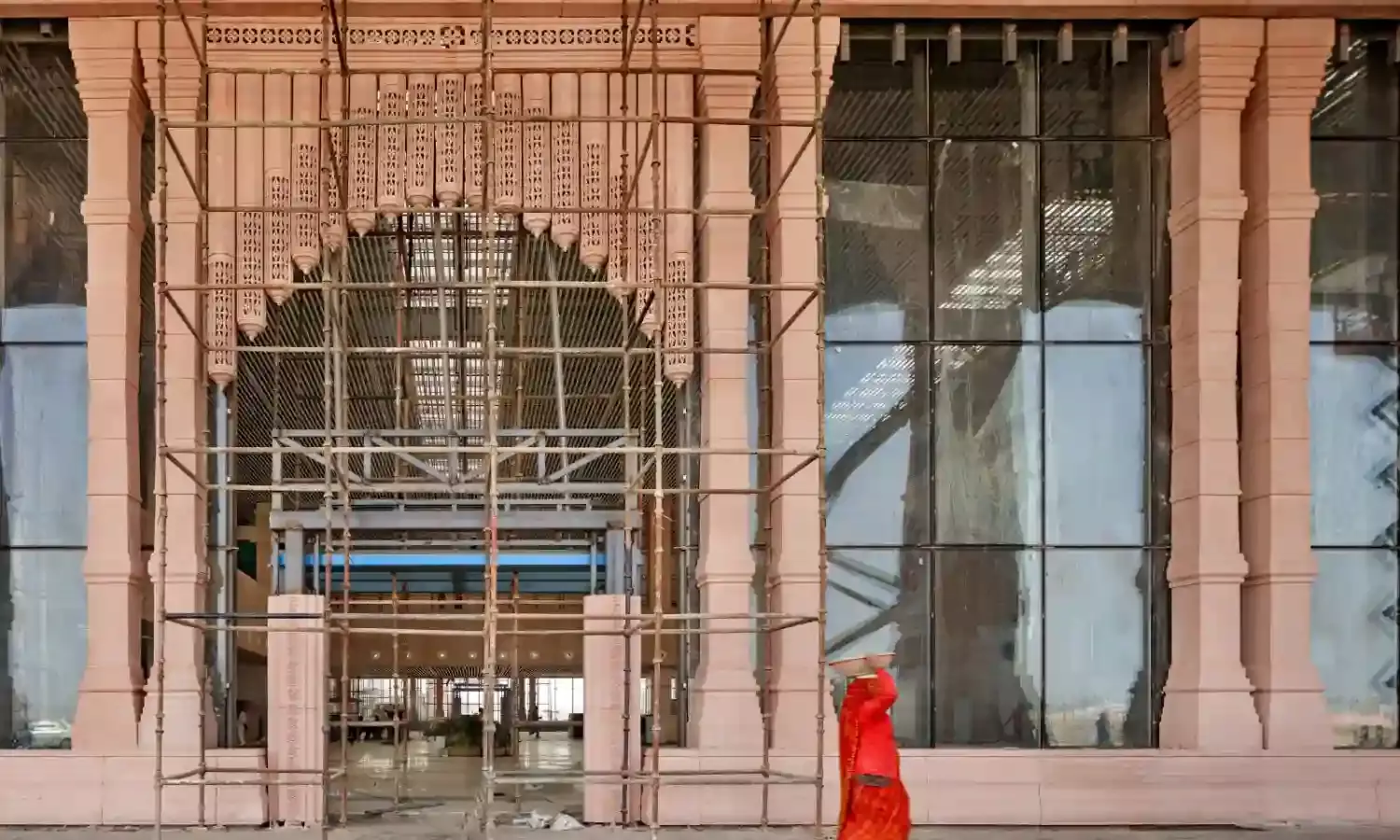Ayodhya Gets An Airport
Lucknow Gup

The people of Ayodhya will soon have an airport of their own. The Nagara style of architecture of the airport in red sandstone is a glowing example of the cultural opulence of the city.
Much before it was reduced to a dusty temple town, Ayodhya was an important marketplace. It is described in ancient texts as one of the region’s six largest cities.
Its location at the junction of important trade roads running east to west had connected Patalipurtra (Patna) to Taxila. The other route, equally busy, ran through Ayodhya from the north to south.
As a bustling hub of intense economic activities, the city was visited by travellers from far and wide. Whenever there was peaceful co-existence, the city thrived.
Both the Buddha and Mahavira had lived here when the city was called Saket meaning heavenly abode. Due to its affluence, the city was frequently attacked in different eras by different forces including the Greeks, reducing it eventually to a small, independent kingdom.
Around the 4th Century the Guptas moved the capital from Pataliputra to the Buddhist city Saket and renamed it Ayodhya or a celestial realm where warring was forbidden. The Guptas had revived Brahmanism and encouraged Vaishnavism.
Hundreds of temples were built in homage to Rama. After an attack by the Huna hordes, Ayodhya lost its importance as a centre of commerce, but its reputation as a place of pilgrimage remained.
The airport is expected to better connect the landlocked city in the heart of Uttar Pradesh (UP) to the rest of the country, and help restore some of the lost economic status of the ancient city.
Harsh Varshneya, Principal Architect told The Citizen that the impact of the Ayodhya airport transcends its architectural and cultural dimensions. It serves as a catalyst for economic growth in the region.
“This isn't just about connectivity, it's about fostering sustainable livelihoods and empowering the region with economic opportunities that reverberate beyond the terminal gates,” Varshneya said.
It is expected that airport related activities will create at least 500 jobs annually, offering tangible benefits to the local community.
Built at a cost of Rs 250 crores, the airport is expected to boost tourism, providing many job opportunities to the local population.
The airport's passenger terminal accommodates 150 arrivals and departures simultaneously, and is designed by STHAPATI is a multidisciplinary architectural practice headquartered in Lucknow and New Delhi.
How Childish Of SP
How childish was it of the youthful Samajwadi Party (SP) chief Akhilesh Yadav to get a Mirchi Baba to contest the last state Assembly elections in Madhya Pradesh (MP)? Although the main opposition party in UP, the SP had fielded 72 candidates in the neighbouring state of MP. Yadav had himself led the campaign in MP.
However, once the elections were announced, the SP discovered that it had not won a single seat. Yadav had returned empty handed to UP along with a reduced share of votes. Madhya Pradesh Chief Minister Shivraj Singh Chouhan had trounced the SP contestant and emerged victorious from the Budhni constituency.
The SP candidate Mahamandaleshwar Vairagya Nand Giri a.k.a Mirchi Baba got 136 votes. This was even less than the four others who had contested as independent candidates!
This is after Yadav had personally campaigned in Giri’s support. He lost to the ruling party by a huge margin of 1,64,815 votes
What is the young Yadav thinking, is the question!
The Alliance’s Future
How will Yadav’s decision to contest 72 seats independently in MP affect the unity of the I.N.D.I.A alliance, is the question. The general elections will be held early next year. Will members of the alliance contest the national elections whimsically, on their own, or will they follow a shared strategy is still not clear.
The SP has been engaged in an ongoing dispute with the Congress over seat sharing. The record of both the Congress and the SP in recent elections has been pathetic allowing a walkover victory to the ruling party in multiple states.
It is the arrogance of the SP that prevents it from accepting the fact that it is still a regional party. While the ego of many Congress leaders who are proud of the fact that their party has a pan Indian presence prevents them from being respectful to their colleagues from regional parties.
Without rising above petty considerations and thinking only of the good of the country, how will the ruling party be defeated at the ballot? How will the I.N.D.I.A alliance ever realise its dream of defeating the ruling party without cashing on the strength of each member of the alliance?
For the moment there seems no evidence of any forceful and united front to challenge the ruling party.
Is BSP Snoozing?
The other opposition party in UP is the Bahujan Samaj Party (BSP) that has been found napping in recent times. However its performance in the three states where elections were held has been better than the SP.
Mayawati-led BSP won two seats in Rajasthan. It featured third in Madhya Pradesh with a vote share of 3.38 percent, and won a 2.05 percent vote share in Chhattisgarh. The BSP had fielded 178 candidates seats in MP where three of its contestants came second but its vote share dropped from 5.01 percent in 2018, when it had won two seats.
The Western UP based Rashtriya Lok Dal (RLD) led by Jayant Chaudhary won one seat in Rajasthan where it had contested as a Congress ally. Subhash Garg of the RLD won Bharatpur with 5,387 votes, defeating BJP’s Vijay Bansal



